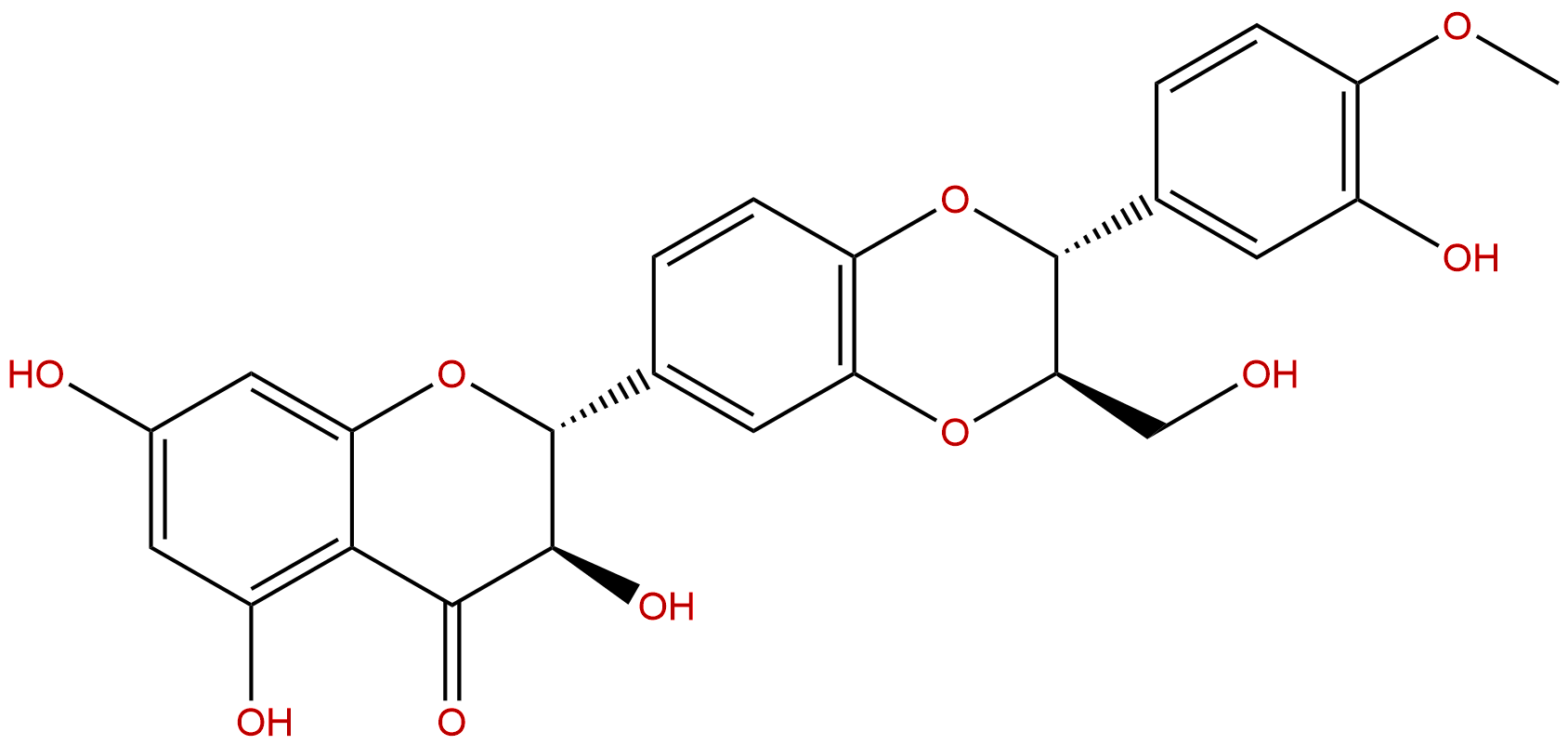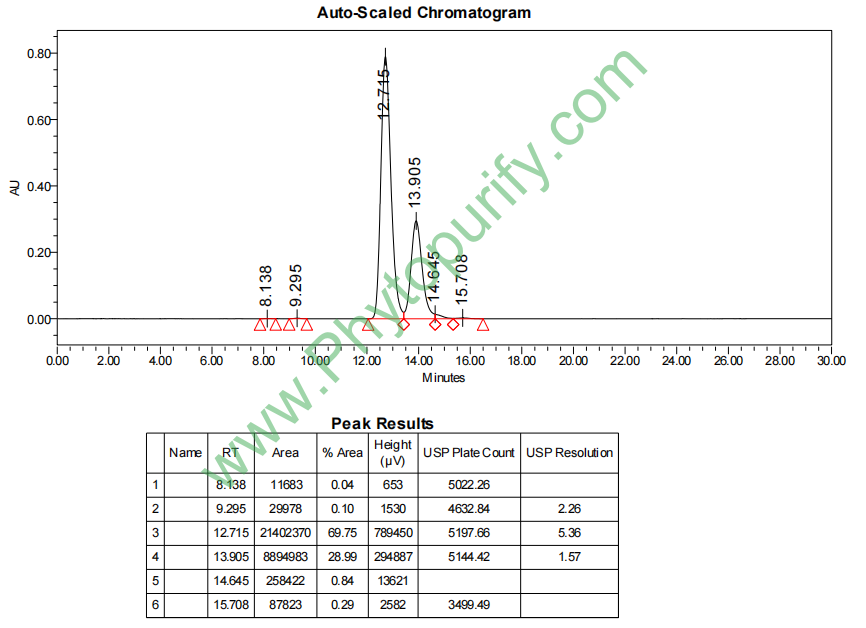
IsosilybinCAS No.:72581-71-6 |
||||||||||
 |
|
|
||||||||

| Catalogue No.: | BP0800 |
| Formula: | C25H22O10 |
| Mol Weight: | 482.441 |
| Botanical Source: | Silybum mariamum(L.) Gaertrn. |
Product name: Isosilybin
Synonym name:
Catalogue No.: BP0800
Cas No.: 72581-71-6
Formula: C25H22O10
Mol Weight: 482.441
Botanical Source: Silybum mariamum (L.)Gaertrn.
Physical Description:
Type of Compound: Flavonoids
Purity: 95%~99%
Analysis Method: HPLC-DAD or/and HPLC-ELSD
Identification Method: Mass, NMR
Packing: Brown vial or HDPE plastic bottle
Storage: Store in a well closed container, protected from air and light. Put into refrigerate or freeze for long term storage.
Whenever possible, you should prepare and use solutions on the same day. However, if you need to make up stock solutions in advance, we recommend that you store the solution as aliquots in tightly sealed vials at -20℃. Generally, these will be useable for up to two weeks.
The product could be supplied from milligrams to grams
Inquire for bulk scale.
Description:
Isosilybin and Silybin might be suitable candidates to design potent PXR antagonists to prevent drug-drug interactions via CYP3A4 in cancer patients.
References:
J Nat Prod. 2014 Apr 25;77(4):842-7.
Identification of isosilybin a from milk thistle seeds as an agonist of peroxisome proliferator-activated receptor gamma.
Peroxisome proliferator-activated receptor gamma (PPARγ) is a key regulator of glucose and lipid metabolism. Agonists of this nuclear receptor are used in the treatment of type 2 diabetes and are also studied as a potential treatment of other metabolic diseases, including nonalcoholic fatty liver disease. Silymarin, a concentrated phenolic mixture from milk thistle (Silybum marianum) seeds, is used widely as a supportive agent in the treatment of a variety of liver diseases.
METHODS AND RESULTS:
In this study, the PPARγ activation potential of silymarin and its main constituents was investigated. Isosilybin A (3) caused transactivation of a PPARγ-dependent luciferase reporter in a concentration-dependent manner. This effect could be reversed upon co-treatment with the PPARγ antagonist T0070907. In silico docking studies suggested a binding mode for 3 distinct from that of the inactive silymarin constituents, with one additional hydrogen bond to Ser342 in the entrance region of the ligand-binding domain of the receptor.
CONCLUSIONS:
Hence, Isosilybin A (3) has been identified as the first flavonolignan PPARγ agonist, suggesting its further investigation as a modulator of this nuclear receptor.
HPLC of Isosilybin
